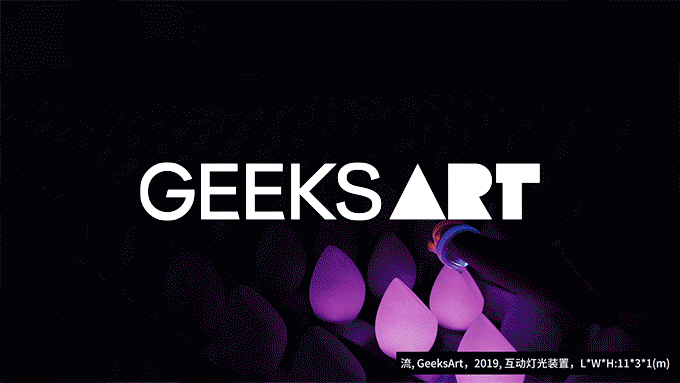过去三年是实体品牌煎熬的三年,许多本土服装品牌选择转战线上,但也仍有少数坚守线下实体市场,反复的疫情对实体商业带来的早已不是简单的流量难题。抛开错综复杂的因素,我们依然可以从一些维度窥视疫情下实体商业的微观变化。消费迭代虽艰难缓慢但却并未停下脚步,轻装上阵将会是许多实体品牌后疫情时代迈出的第一步。
In the past three years, physical brands have suffered torments. Many local fashion brands chose to join online competition, but a minority still held fast to brick-and-mortar stores. What the lingering shadow of pandemic brings to traditional commerce is no longer simply a lack of customers. Regardless of complex factors, we can still catch a glimpse of microscopic changes in traditional commerce in some dimensions. Consumption iteration never stops despite hardships and slow progress, so discarding heavy burdens will be the first step that many physical brands take in the post-pandemic era.
▲A店空间概览 Over view of the A store
▲几何元素的穿插与交织 geometric elements interweave in the space
如今的商业空间需要应对更复杂的市场环境及更多不确定因素,狭义的空间设计已无法适应品牌未来的发展。在本次新SI设计中,我们将商业空间中的各部分元素进行分解和重组,让每个空间零件都能最大化适应不同的场地条件以及各种物管要求。我们希望通过建立一套可持续的商业空间策略,来解决每一个新空间自身所产生的问题。
Today, commercial space needs to cope with more complex market circumstances and more uncertainties, making interior design in a narrow sense unable to adapt to the future development of brands. In the new SI design, we break down and rearrange elements of each part in the commercial space, enabling each spatial component to meet different conditions of the site and various requirements of real estate management to the largest extent. We hope to develop a series of sustainable strategies for commercial space, to settle problems arising from each new space.
▲金属网帘暗示出不同的分区 metal mesh hinted the different functional areas
▲不同材料在空间中的虚实关系 the virtual-real relationship of different materials in space
新的SI设计将店铺的墙体与结构做出重新的梳理,以四周的墙体作为基底,吃出一圈变化的厚度形成一套负型的系统。在这个厚度之内把店内的辅助空间灵活排布,收银、试衣、仓库、货架壁龛这些被拆散的元件被镶嵌到负型系统的厚度之中,作为新SI系统的常态化固定部分。
▲适用于不同店型的负型系统 A negative system applies to different shop types
▲新店(A店)平面图 Floorplan of A store
▲新店(B店)平面图 Floorplan of B store
The new SI design rearranges the walls and structure of the store, with surrounding walls as a base to create a circle varying in thickness and form a system in negative space. Within the thickness, auxiliary spaces in the store are laid out flexibly, and disassembled components such as checkouts, fitting rooms, warehouses, racks and alcoves are inlaid into the system in negative space, which compose a normal fixed part of the new SI system.
▲不同材料在空间中的虚实关系 the virtual-real relationship of different materials in space
而负型之外的销售展示部分则以岛台为中心,形成环绕型的动线。中岛的展示道具利用绳索,不锈钢板与金属织网等现代工业材料,以抽象化的方式转译传统织布机与纱帘。暗喻服装纺织行业从传统的手工制造业到现在的工业化生产,再到智能制造的过程。
The part of marketing and display outside negative space centers around an island counter, creating circular locomotion. Props for display at the island counter are made of ropes, stainless steel plates and metal meshes, to convey the images of traditional looms and sheer curtains in an abstract way. This is a metaphor for the development of the garment and textile industry from traditional craftsmanship to modern industrial manufacturing and then to intelligent manufacturing.
▲B店织布机装置细部 details of loom installation in B store
而构成空间展售最主要的道具陈列系统,除了与墙体必要的固定衔接外,均独立于硬装系统外。正型空间内的道具可根据店铺大小移动搭配,结合了挂杆和展台双重功能,且完全通过场外制作,场内拼装来实现,这极大地减少了硬装与道具衔接上误差和施工时间,同时也给空间主视觉装置道具提供更大的发挥和拓展空间。
As a key part of the display and marketing space, the system for displaying props is independent from the interior finish system except for some necessary fixed connections with walls. Props in positive space can be moved and matched according to the area of a store, serving the dual functions of racks and stands. Moreover, they are fully made outside the site and assembled at the site, which can significantly reduce errors in connecting props with interior finish and time of construction, as well as leave a larger space for developing and expanding major visual facilities and props in the space.
▲B店织布机装置 loom installation in B store
▲B店织布机装置成划分空间的元素 the loom installation divides the different areas
▲B店织布机装置细部 details of loom installation in B store
▲B店空间概览 Over view of the B store
在新形象店的场地条件中,四面墙体并非完全方正,且场地中有较大的柱子。为应对这样的地条件,新砌墙体需尽可能将空间重新规整:入口左边的斜墙通过规整后,能与空间其他墙面达成方正空间,而原始墙面的斜角,也通过穿插在新筑墙体上的金属板体块被暗示出来。底部原始较大的圆柱,通过墙体的退让,以最原始裸露的状态直接呈现在挂衣服的壁龛中。
At the original site of the new store, the four walls fail to form a rectangular space, and there are large pillars. To cope with such conditions of the site, newly built walls need to straighten the space out as far as possible: the inclined wall on the left of the entrance can form a rectangular space after adjusted, and the oblique angle of the original wall is indicated by a metal plate inserted in the newly built wall. With the movement of the wall backwards, the original big column at the bottom is directly exposed in its most original state in the alcove for hanging garments.
▲利用原有混凝土柱子所构成的壁龛陈列区域 utilizing the existing concrete columns to form a niche display area
▲不同材料与道具在空间中的虚实关系 the virtual-real relationship of different materials and props in space
天花采用吊挂安装的标准化铝方通格栅,并在分缝中暗藏射灯导轨,这一做法在保证整体空间形象统一的前提下,直接为业主省去了改消防和空调系统的费用和时间成本。
The ceiling is made of suspended standard aluminum rectangular bar gratings, in gaps of which hidden spotlight tracks are installed, to ensure a unified image of the whole space while directly saving costs and time that the owner has to spend changing fire safety and air conditioning systems.
▲道具细部 Details of props
基于新SI设计的新店,只用了22天便施工完成并开业,这为后续品牌的高效发展提供了可持续的空间操作方法。更重要的是,这样的空间模型是可以复制和拓展的。在新店一店后,我们将这套SI系统应用到200㎡的制店中,并在其中实现空间零件的升级替换。
It took only 22 days for the Cinda Jinmao Store based on the new SI design to finish construction and start business, which provides sustainable spatial practices for the efficient development of the brand in future. What’s more important is such a spatial model can be copied and expanded. After the completion of the Cinda Jinmao Store, we applied the SI system in a duplicate store of 200 m2 in Uni Park in Foshan, where spatial components are upgraded and replaced.
▲利用原有混凝土柱子所构成的壁龛陈列区域 utilizing the existing concrete columns to form a niche display area
▲道具细部 Details of props
项目信息——
设计公司:加减智库设计事务所
完成年份:2022.12.21
设计团队:林泳君、林倩茹、林冕仕
联系邮箱:pmtpartners@163.com
项目摄影:曾喆
业主品牌:LIULIU MO
主要材料:不锈钢、艺术涂料、铝材格栅、金属网垂帘、 水泥地砖
Project Information——
Project Name:LIULIU MO Fashion Store
Design Firm:PMT Partners Ltd.
Website:www.pmt-partners.com
Completion Year:2022.12.21
E-mail:pmtpartners@163.com
Principal Architects:Zhe Zeng, Yan Hu, Weihao Zhao
Design Team:Yongjun Lin, Qianru Lin, Mianshi Lin
Photography:Zhe Zeng
Client:LIULIU MO




































